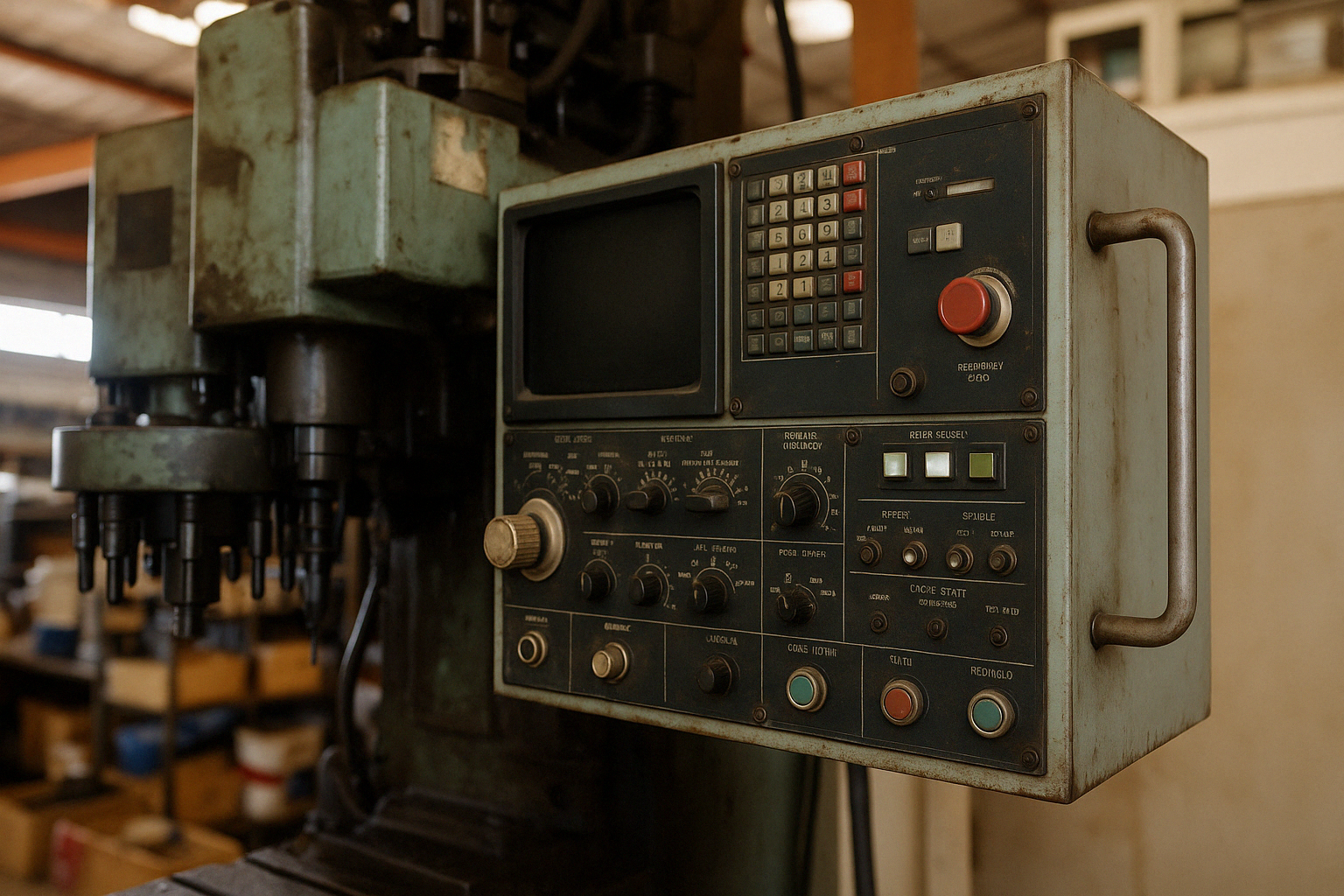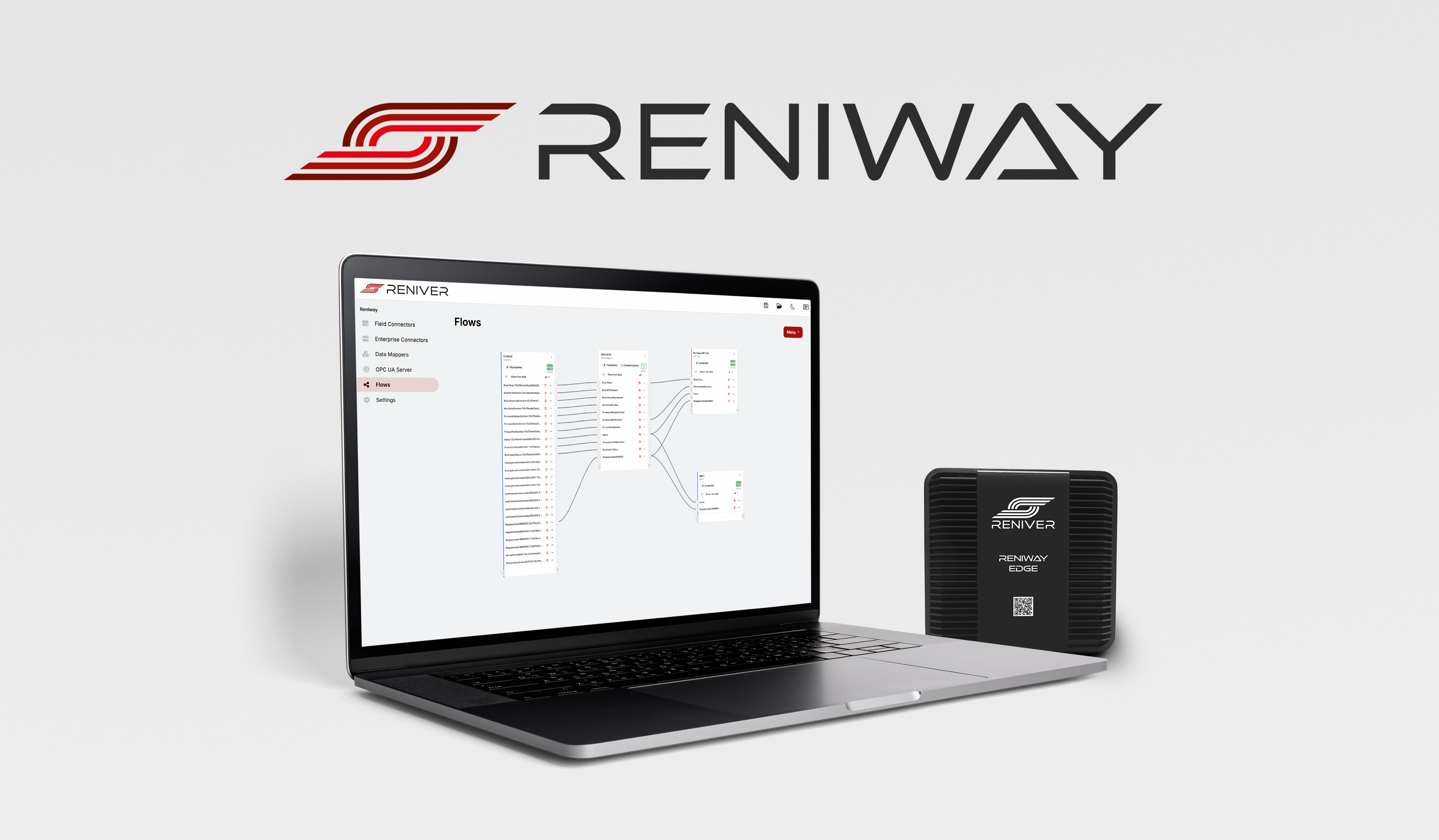How To Integrate Legacy Machines Into Modern Industrial Systems
Identifying common issues with connecting legacy machines and strategies for successful integration.

Table of Contents:
- Introduction
- Common challenges in integrating legacy machines
- Solutions for connecting legacy machines to modern systems
- Scaling legacy machine integration for industry 4.0
- Conclusion and next steps
1. Introduction
Legacy machines will continue to operate for years
Walk into any industrial facility, and you'll likely find machines that have been running for decades, outlasting the engineers who first installed them. These machines were built for reliability, not connectivity, and because they continue to perform their tasks well, replacing them is rarely a priority. Whether due to high replacement costs, production dependencies, or a lack of suitable alternatives, many legacy machines will remain in operation for years to come.
The growing need for digitalization and data-driven automation
At the same time, industrial processes are becoming increasingly data-driven. Real-time machine insights are now critical for optimizing efficiency, reducing downtime, and enabling predictive maintenance. Digitalization is no longer optional, and companies that fail to integrate their machines into modern SCADA, MES, and cloud-based platforms risk falling behind competitors who make full use of their operational data.
Why legacy machines remain disconnected, and why that matters
However, integrating legacy machines into modern industrial environments is not straightforward. Many lack network connectivity, standardized communication protocols, or structured data formats, making them difficult to connect with today's industrial automation systems. In the next section, we will explore the key challenges that must be addressed when integrating legacy machines into Industry 4.0 frameworks.
2. Common Challenges in Integrating Legacy Machines
Integrating legacy machines into modern industrial environments comes with technical and operational hurdles. These machines were not designed for networked communication, standardized data exchange, or cybersecurity considerations, making direct integration difficult. Without addressing these challenges, companies risk data gaps, inefficiencies, and security vulnerabilities in their automation systems. The following are the most common obstacles that need to be overcome before legacy machines can be successfully connected to SCADA, MES, and cloud platforms.
Lack of modern communication protocols
Many legacy machines use outdated interfaces like RS-232, RS-485, or proprietary fieldbus protocols that do not support Ethernet, OPC UA, or MQTT. Without direct network compatibility, integrating these machines with SCADA, MES, or cloud platforms requires additional hardware or protocol conversion.
Limited or proprietary data access
Some machines use closed data structures or undocumented protocols, restricting access to valuable operational data. Without a clear way to extract and interpret this data, integrating these machines into modern analytics or automation systems becomes difficult. In some cases, reverse engineering or middleware solutions are required to standardize the data format.
Hardware limitations
Older PLCs and controllers often have low processing power, limited memory, and outdated firmware, making them incapable of handling complex data processing or modern encryption standards. This limits the ability to run advanced automation logic, store historical data, or communicate with external platforms without additional processing hardware.
Cybersecurity risks
Legacy machines often lack built-in security measures, such as authentication, encryption, or secure communication protocols. Many were designed before cybersecurity became a major concern, meaning they were never intended to be connected to modern networks with external access points. This makes them vulnerable to unauthorized access, malware infections, and system manipulation, even if they are not directly connected to the internet.
At first, the lack of internet access might seem like a cybersecurity strength. Machines that are not connected to external networks are isolated from remote attacks, reducing exposure to threats like ransomware or hacking attempts. However, when the attack surface is reduced by isolating the machine, then we will miss out on all the benefits as well.
Despite being offline, legacy machines are often connected to local industrial networks, where threats can still spread. Attackers who gain access to these networks, whether through phishing, infected USB drives or compromised workstations, can still manipulate machine behavior, disrupt production, or exfiltrate data. Additionally, isolating these machines creates operational inefficiencies, such as:
-
No remote access for diagnostics and troubleshooting, requiring manual interventions.
-
Limited access to security updates and patches, leaving known vulnerabilities unaddressed.
-
Lack of real-time anomaly detection, making it harder to detect cyber threats before they cause damage.
Instead of relying on isolation, companies should implement network segmentation, firewalls, and strict access controls to keep legacy machines secure while enabling safe connectivity. A layered approach with combining physical security, network protections, and monitoring tools is the best way to balance cybersecurity and operational efficiency in an industrial environment.
👉 Want to know more about safeguarding your industrial data? Read more in our dedicated cybersecurity article.
3. Solutions for Connecting Legacy Machines to Modern Systems
Integrating legacy machines into modern industrial systems requires workarounds and adaptations to overcome their lack of network connectivity, proprietary data structures, and security weaknesses. The following solutions help bridge the gap between older equipment and modern SCADA, MES, and cloud platforms.
Using protocol converters and gateways
Most legacy machines communicate using older industrial protocols such as Modbus RTU, Profibus, and RS-232, which are incompatible with modern networked systems. Protocol converters and gateways act as translators, converting these legacy protocols into Ethernet-based communication standards like OPC UA or MQTT.
-
Example: A gateway can take Modbus RTU data from a legacy PLC and expose it as OPC UA tags, making it readable by SCADA and MES systems.
-
Why it works: This approach requires no modification to the legacy machine itself, making it a cost-effective and non-intrusive solution.
Implementing edge devices for data processing
Some legacy machines generate large amounts of raw data but lack the processing power to filter, analyze, or transmit it efficiently. Edge devices act as intermediaries, collecting data from the machine, preprocessing it, and sending only relevant information to cloud platforms or central control systems.
-
Example: An edge device can collect sensor data from a CNC machine, apply real-time filtering and analytics, and then push only key performance indicators (KPIs) to a cloud dashboard.
-
Why it works: By offloading processing from the legacy machine, network bandwidth is optimized, and industrial systems can access meaningful insights without overwhelming central servers.
Adding external sensors for data extraction
When direct access to machine data is not possible due to proprietary systems or missing communication interfaces, external sensors provide an alternative. Instead of retrieving data from the machine's internal controller, sensors capture real-time operational data externally.
-
Example: A power meter can monitor energy consumption on a legacy machine, providing insights into efficiency and predictive maintenance needs.
-
Why it works: This approach bypasses proprietary restrictions, allowing critical data collection without modifying the machine's internal systems.
Reverse engineering proprietary data structures
Some legacy machines store or transmit data in undocumented, manufacturer-specific formats, making integration difficult. Reverse engineering techniques help decode and standardize this data for use in modern automation systems.
-
Example: Capturing serial communication logs between a legacy PLC and its operator interface to determine how commands and responses are structured.
-
Why it works: Once data formats are understood, they can be mapped into standard protocols for easier integration. However, this method requires technical expertise and may be time-consuming.
Securing legacy machines
Older machines were never designed with cybersecurity in mind, making them vulnerable to attacks if exposed to modern industrial networks. Since replacing them is often not an option, additional security measures must be implemented.
-
Network segmentation and firewalls
-
Separate legacy machines from enterprise networks to prevent lateral movement of cyber threats.
-
Use firewalls and VLANs to restrict access only to necessary systems.
-
-
Encryption and secure authentication
-
Protect machine data by encrypting communications when transmitting over a network.
-
Implement access controls and authentication layers to prevent unauthorized modifications.
-
These solutions enable legacy equipment to communicate, provide valuable data, and operate safely within modern industrial environments. The next section explores scaling these integration efforts to support Industry 4.0 initiatives.
4. Scaling Legacy Machine Integration for Industry 4.0
Successfully integrating legacy machines is just the first step. To fully support Industry 4.0 initiatives, companies must ensure that machine data is structured, standardized, and efficiently managed across multiple systems. This allows for real-time analytics, predictive maintenance, and automated decision-making.
Centralized data collection and standardization
As legacy machines become connected, raw data from different sources must be structured and standardized to be usable across SCADA, MES, and industrial analytics platforms. Without a unified approach, inconsistent data formats and missing context can lead to misinterpretations and inefficiencies.
-
Why it's important: A lack of standardization makes it difficult to extract meaningful insights or automate processes effectively.
-
Solution: A centralized data architecture ensures that all collected machine data follows a consistent structure, making it easily accessible for historical analysis, reporting, and automation.
Ensuring seamless data mapping with Reniway Edge

Legacy machines output disorganized, unstructured data that must be mapped and standardized before integration into higher-level industrial systems. Data mapping plays a crucial role in ensuring that machine-generated variables align with OPC UA, MQTT, and other industrial protocols, enabling smooth communication between machines and software platforms.
Reniway Edge simplifies this process with:
-
A low-code, flow-based UI that eliminates the need for complex scripting.
-
Reusable mapping templates to scale integrations efficiently across multiple machines.
-
Protocol translation capabilities, allowing legacy machines to communicate with modern SCADA, MES, and cloud-based analytics platforms.
By using Reniway Edge, companies can map, standardize, and transform machine data in an intuitive way, significantly reducing the time and effort needed for integration.
👉 Want to learn more about data mapping? Read our in-depth guide on How to Map Machine Data and Standardize It for Industrial Connectivity.
5. Conclusion and Next Steps
Integrating legacy machines into modern industrial systems is essential for supporting data-driven automation, predictive maintenance, and Industry 4.0 initiatives. However, these machines present challenges such as outdated communication protocols, proprietary data formats, hardware limitations, and cybersecurity risks.
To overcome these obstacles, companies can implement solutions such as protocol converters, edge devices, external sensors, and data mapping tools to standardize machine data and enable seamless integration with SCADA, MES, and cloud platforms. Securing legacy machines through network segmentation, encryption, and access controls further ensures a safe and scalable industrial environment.
Choosing the best integration strategy
Every industrial environment is different, and selecting the right approach depends on:
-
The type of legacy machines in operation and their connectivity limitations.
-
The required level of integration (local SCADA, MES, cloud-based analytics).
-
Security and scalability considerations for long-term reliability.
Assessing these factors helps determine whether to retrofit machines, implement edge processing, or restructure data flows for maximum efficiency.
Need expert guidance?
Successfully integrating legacy machines requires technical expertise and the right tools. Whether you need a customized strategy or a scalable data mapping solution, we can help.
-
Reniway Edge simplifies legacy machine integration with low-code data mapping, reusable templates, and protocol conversion, making it easier to standardize machine data.
-
Our expert team provides tailored guidance to help you choose the best integration strategy for your facility.
Contact us to discuss your industrial connectivity challenges or explore Reniway to see how we can simplify legacy machine integration.